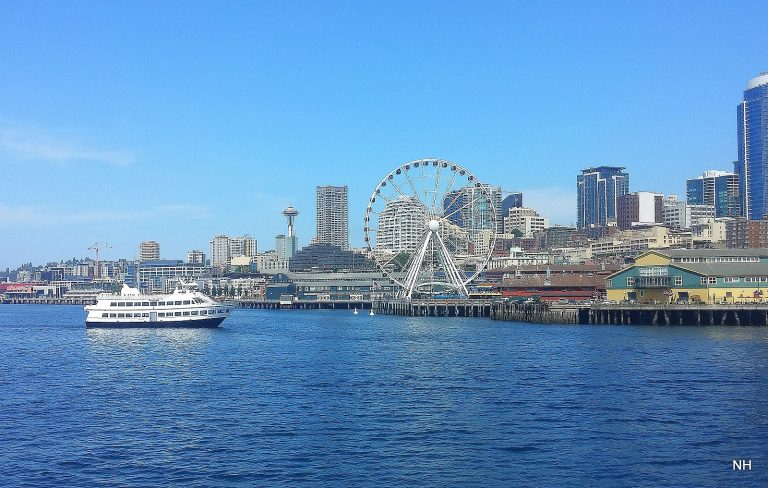Published on April 22, 2024

Written by Linda Baker for The New York Times.
As remote work reshapes the way people live and travel around cities, Americans are taking to the waterways not only as part of their commute but also as part of their daily lives.
Some coastal cities are seeing ferry ridership bounce back after a decline during the pandemic, and growing interest in water transit is spurring both new types of ferry services and waterfront development.
In Bremerton, Wash., a fast-growing Seattle suburb on Puget Sound, a $141 million development opened less than 100 yards from a high-speed passenger ferry that travels to downtown Seattle in 30 minutes; its older car ferry service takes an hour. Carteret, N.J., is launching a ferry service to Manhattan, adjacent to a waterfront film and television production complex. Ferry service is also central to the development of a new community on a former naval base off San Francisco.
The ferry boom comes as municipal governments are trying to address a variety of social, economic and environmental challenges, and as some of the country’s largest cities look to water transport to ease traffic, connect communities and meet housing and commercial development goals. Last year, the Federal Transit Administration announced grants totaling $220.2 million for ferry systems. And local governments are offering tax incentives to redevelop industrial zones.
Ferry systems are expanding beyond traditional commuter and tourist routes to meet the “discretionary travel patterns” of remote workers and retirees, said Ryan Avery, interim director of the Washington State Transportation Center at the University of Washington. “They’re doing it for shopping, going to a football, soccer or baseball game,” he said.
“The market changed,” he continued. “People also want faster service.” He noted the changes were also opening up opportunities for new types of terminal designs — as mixed-used hubs offering other transit connections, rather than as a single-use building surrounded by a parking lot.
Continue reading here.
As remote work reshapes the way people live and travel around cities, Americans are taking to the waterways not only as part of their commute but also as part of their daily lives. Ryan Avery, interim director of the Washington State Transportation Center at the University of Washington is quoted.